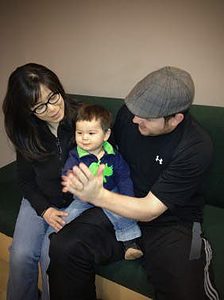A new study by scientists at University of British Columbia and Université Paris Descartes found that babies growing up in bilingual environments are more than well equipped to tackle the challenge of distinguishing between the two from a very early age – as young as seven months old according to the findings.

Scientists, linguistics and neurologists mostly, have always been fascinated by how children effortlessly acquire the grammar of their native language even though speech provides no direct information about underlying structure. The idea becomes even more curious and fascinating when the children in question are exposed to two languages with great difference in grammar between them.
It’s rather remarkable how the infant mind can acquire seemingly difficult grammatical properties of a language, and the mechanics and means through which this is achieved is only beginning to be understood properly. Frequency and order of words play a significant role in the learning process, but the present findings suggest that mean duration, mean pitch, maximum pitch and mean intensity of the stressed vowels of content words and functors play a major as well.
Typically languages differ greatly in the basic word order type defined by the relative order of the verb (V) and its object (O). For their study, the researchers looked at infants growing up in bilingual environments where one of the language was VO (English, Italian or Spanish) where prepositions and articles typically precede nouns (to London, the house), and the other was an OV language (Japanese, Turkish or Basque), where the reverse applies.
“By as early as seven months, babies are sensitive to these differences and use these as cues to tell the languages apart,” says UBC psychologist Janet Werker, co-author of the study.
The researchers’ results show that infants in bilingual environments use pitch and duration cues to discriminate between languages – such as English and Japanese – with opposite word orders, besides word frequency which is often sufficient for monolingual infants.
“For example, in English the words ‘the’ and ‘with’ come up a lot more frequently than other words – they’re essentially learning by counting,” says Judit Gervain, a linguist at the Université Paris Descartes and co-author of the new study. “But babies growing up bilingual need more than that, so they develop new strategies that monolingual babies don’t necessarily need to use.”
“If you speak two languages at home, don’t be afraid, it’s not a zero-sum game,” says Werker. “Your baby is very equipped to keep these languages separate and they do so in remarkable ways.”
Findings were reported in the journal Nature Communications.
source: University of British Columbia






